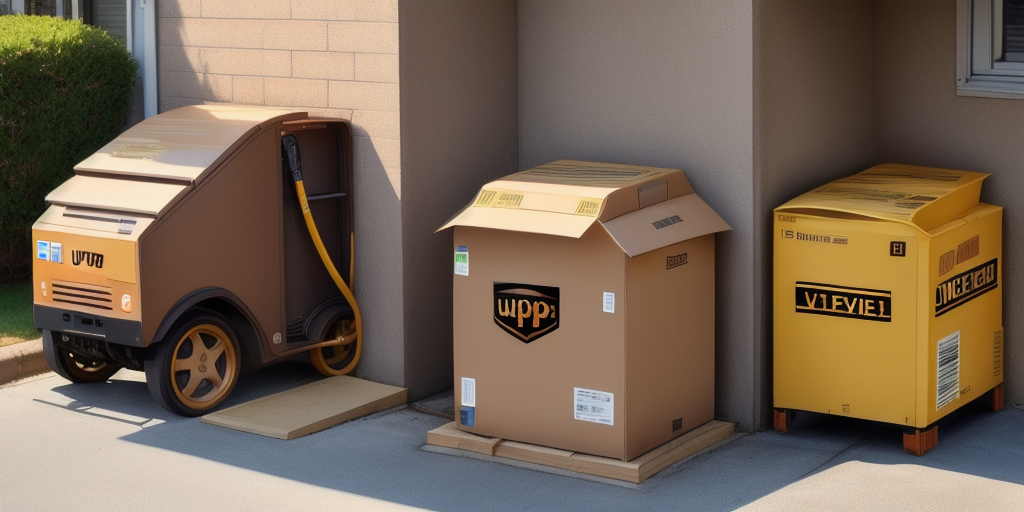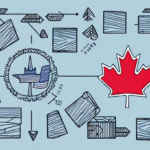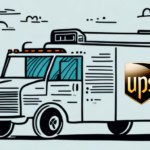Understanding UPS Residential Charges for Next Day Air Saver Deliveries
If you are a business owner or individual who frequently utilizes shipping services, you are likely familiar with the various fees and charges associated with shipping. One particular area that has caused confusion and frustration for many UPS customers in recent months is the billing of residential charges for Next Day Air Saver deliveries. In this article, we will delve into the details of this issue, provide tips and strategies for managing your shipping costs with UPS, and update you on the latest changes as of 2023.
What is UPS Next Day Air Saver?
UPS Next Day Air Saver is a premium shipping service offered by UPS to its customers. This service guarantees delivery by the next business day at a cost that is lower than the standard Next Day Air service. It is particularly useful for those who require fast delivery but are willing to pay a slightly lower price for the service.
One of the benefits of UPS Next Day Air Saver is that it offers a money-back guarantee if the package is not delivered on time, providing customers peace of mind and ensuring that they are not paying for a service that does not meet their expectations.
Another advantage of UPS Next Day Air Saver is its availability for both domestic and international shipments. This means that customers can send urgent packages to destinations around the world with the same level of reliability and speed as domestic shipments.
How Does UPS Charge for Residential Deliveries?
UPS imposes additional fees for delivery to residential addresses, as these locations typically require more time and resources than commercial addresses. These fees are generally added to the base cost of the shipping service. Recently, there has been confusion due to UPS not previously billing for the residential charges associated with Next Day Air Saver deliveries.
UPS offers various options for residential deliveries, including Signature Required and Adult Signature Required services. These options, which may come with additional fees, provide added security and peace of mind for both the sender and recipient.
Additionally, UPS has implemented a Delivery Intercept service, allowing senders to redirect packages to a different address or hold them for pickup at a UPS location. This service is particularly useful for residential deliveries if the recipient is unavailable to receive the package at the original address.
What Are the Additional Charges for UPS Next Day Air Saver Residential Deliveries?
The additional charges for Next Day Air Saver residential deliveries can vary based on the specific details of the shipment. UPS charges a Residential Surcharge fee determined by the type of service, the delivery location, and the package's weight. As of 2023, this fee is approximately $6.50 for Next Day Air Saver deliveries within the United States, though it is subject to change. It's crucial to stay updated on current rates and charges by consulting the UPS Shipping Rates page.
In addition to the Residential Surcharge, other charges may apply for UPS Next Day Air Saver residential deliveries. These can include fees for special handling, oversized packages, and deliveries to remote or hard-to-reach areas. It's advisable to check with UPS or your shipping provider to understand all potential charges and fees before scheduling a Next Day Air Saver delivery.
Why Were Some Next Day Air Saver Residential Charges Not Previously Billed?
In recent updates, UPS revised its billing practices concerning Next Day Air Saver residential charges. Previously, UPS did not consistently bill for residential charges for this specific service. The company has since aligned its billing practices with industry standards, ensuring that residential charges are now consistently applied moving forward.
This change primarily affects residential customers using the Next Day Air Saver service, as commercial customers were already being billed appropriately. UPS has assured that this adjustment will not result in additional fees or charges for customers who were previously not billed for residential charges.
UPS emphasizes that these changes are part of their efforts to enhance transparency and clarity in billing practices. By aligning with industry standards and consistently billing for all applicable charges, UPS aims to provide a more straightforward and predictable experience for their customers.
Understanding the Recent Changes to UPS Billing Practices
The recent modifications to UPS billing practices have led to some confusion and frustration among customers. UPS regularly reviews and updates its fees to remain competitive and financially sustainable. While unexpected charges can be frustrating, it's important to recognize that these fees are necessary to cover the costs of providing reliable shipping services.
One significant change implemented by UPS is the introduction of dimensional weight pricing. This means that packages are now charged based on their size and weight, rather than just their weight alone. This adjustment responds to the increasing number of lightweight, bulky packages being shipped, which occupy more space on delivery trucks and planes. By adopting dimensional weight pricing, UPS more accurately reflects the true cost of shipping these types of packages.
For more detailed information on UPS pricing strategies, refer to the UPS Pricing Strategies page.
How to Avoid Unexpected Charges on Your UPS Bill
To avoid unexpected charges on your UPS bill, consider the following strategies:
- Stay Informed: Always be aware of the current rates and fees associated with the services you are using. UPS provides transparent pricing information on its website, which is a helpful resource for understanding fees and charges.
- Manage Shipping Costs: Proactively manage your shipping costs by consolidating shipments or negotiating rates with UPS.
- Accurate Declaration: Ensure that you accurately declare the value of your shipment. Under-declaring can result in additional charges if the package is lost or damaged during transit.
- Proper Packaging: Properly package and label your shipments to avoid delays or fees due to incorrect labeling or packaging.
Tips for Managing Your Shipping Costs with UPS
Managing your shipping costs with UPS can be challenging, but implementing the following strategies can help keep costs under control:
- Analyze Shipping Needs: Regularly analyze your shipping needs and usage to identify areas where you could save money.
- Negotiating Rates: Work with a UPS account representative or third-party logistics provider to negotiate reduced rates and streamline your shipping processes.
- Optimize Shipping Options: Take advantage of UPS's various shipping options. For example, UPS offers a range of delivery speeds, from standard ground shipping to expedited air shipping. By choosing the most appropriate option for each package, you can avoid overpaying for unnecessary speed or services.
- Utilize Discounts: UPS offers discounts for certain types of shipments, such as those going to residential addresses or those shipped in bulk. Understanding and utilizing these discounts can further reduce your shipping costs.
Comparing Shipping Rates from UPS and Other Carriers
Comparing shipping rates from UPS and other carriers is an effective way to determine which provider offers the best value for your specific shipping needs. When comparing rates, consider factors such as delivery times, fees, and customer service. Additionally, be mindful of any additional fees or charges that may not be immediately visible when comparing prices.
It's also important to consider the type of items you are shipping and the destination. Some carriers may offer better rates for specific types of items or for shipping to particular regions. For example, UPS may offer better rates for shipping heavy items, while another carrier might provide more competitive rates for international destinations. Taking the time to research and compare rates from multiple carriers ensures you are getting the best value for your shipping needs.
For more insights on comparing shipping rates, visit the Comparing Shipping Rates guide.
The Impact of COVID-19 on UPS Shipping Rates and Policies
The COVID-19 pandemic significantly impacted shipping rates and policies for UPS and other carriers. With increased demand for shipping services and potential disruptions to supply chains, UPS had to adjust its rates and policies to accommodate changing circumstances. Staying up-to-date with the latest developments and any changes to fees or charges is essential.
One major change UPS implemented in response to the pandemic was the suspension of their service guarantee. This means UPS is no longer guaranteeing delivery times for any of their services, including expedited shipping options, due to potential delays caused by factors like staffing shortages or transportation disruptions. Customers should keep this in mind when planning their shipments and consider alternative options if time-sensitive delivery is required.
For more information on how COVID-19 has affected UPS services, refer to the UPS COVID-19 Impact page.
Best Practices for Negotiating Shipping Rates with UPS
Negotiating shipping rates with UPS can be an effective way to reduce your shipping costs. Here are some best practices:
- Understand Your Shipping Needs: Have a solid understanding of your shipping needs and usage patterns.
- Research Current Market Rates: Be aware of current market rates and what competitors are offering.
- Negotiate Multiple Factors: Be prepared to negotiate on various aspects such as volume discounts, delivery times, and additional services.
- Leverage Relationships: Building a strong relationship with your UPS account representative can facilitate better negotiation outcomes.
Understanding the Different Types of UPS Delivery Services and Their Costs
UPS offers a wide range of delivery services tailored to meet the needs of different customers. These services vary in terms of delivery times, features, and costs. Understanding the differences between these services is crucial for choosing the best option for your specific shipping needs. Key services include:
- UPS Ground: Cost-effective ground shipping for non-urgent deliveries.
- UPS 3 Day Select: Guaranteed delivery within three business days.
- UPS 2nd Day Air: Delivery by the second business day.
- UPS Next Day Air: Guaranteed overnight delivery.
- UPS Next Day Air Saver: Overnight delivery at a lower cost than standard Next Day Air.
- International Services: Various options for international shipping with different delivery times and costs.
For a comprehensive overview of UPS delivery services, visit the UPS Delivery Services page.
How to Track Your UPS Shipments and Monitor Your Expenses
Tracking your UPS shipments and monitoring your expenses are essential for staying informed and in control of your shipping costs. UPS provides a variety of tools and resources to help customers track their shipments, such as the UPS website and mobile app.
- UPS Tracking: Use the UPS tracking tool on their website or mobile app to monitor the status of your shipments in real-time.
- UPS Billing Center: Access detailed billing information and manage your invoices through the UPS Billing Center.
- Expense Analysis: Keep detailed records and regularly analyze your shipping expenses to identify areas where you could save money.
For more details on tracking and managing expenses, check out the UPS Tracking Tools section.
Strategies for Streamlining Your Shipping Processes and Reducing Costs with UPS
Streamlining your shipping processes and reducing costs with UPS requires a proactive approach and careful attention to detail. Consider implementing the following strategies:
- Consolidate Shipments: Combine multiple shipments into a single shipment to take advantage of volume discounts.
- Optimize Packaging: Use appropriately sized packaging to minimize dimensional weight charges and reduce material costs.
- Automate Shipping Processes: Utilize UPS's shipping software and integrations to automate label printing, tracking, and billing.
- Standardize Shipping Procedures: Establish standardized procedures for packaging, labeling, and shipping to reduce errors and improve efficiency.
Implementing these strategies can lead to significant cost savings and more efficient shipping operations over time.
Common Mistakes to Avoid When Using UPS for Your Business Shipments
When using UPS for your business shipments, avoiding common mistakes can help minimize costs and maximize efficiency. Here are some pitfalls to watch out for:
- Poor Packaging: Failing to properly package shipments can lead to damaged goods and additional fees for repackaging or handling.
- Ignoring Discounts: Not taking advantage of available discounts and promotions can result in higher shipping costs.
- Incorrect Labeling: Incorrect or missing labels can cause delays, misdeliveries, and additional charges.
- Underestimating Shipment Values: Under-declaring shipment values can lead to significant costs if packages are lost or damaged, as insurance claims may not cover the full value.
- Neglecting Billing Details: Overlooking invoice details can result in unexpected charges and difficulties in expense tracking.
By being proactive in avoiding these mistakes, you can improve your shipping efficiency and ensure a smoother shipping process with UPS.
Conclusion
Understanding the intricacies of UPS's billing practices for Next Day Air Saver residential deliveries is essential for both businesses and individual customers aiming to manage their shipping costs effectively. By staying informed about current rates, utilizing available discounts, and implementing strategic shipping practices, you can optimize your shipping experience with UPS. Always ensure to stay updated with UPS's latest policies and leverage their tools to track and manage your shipments efficiently.
For more information and resources on managing your UPS shipments, visit ShipScience.






















